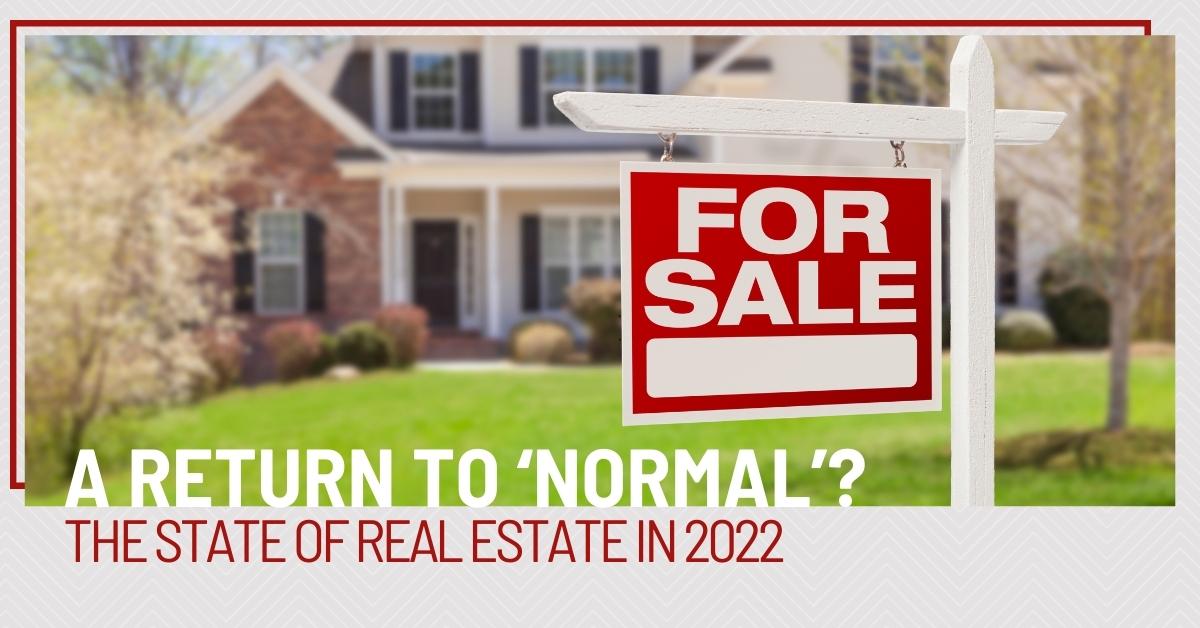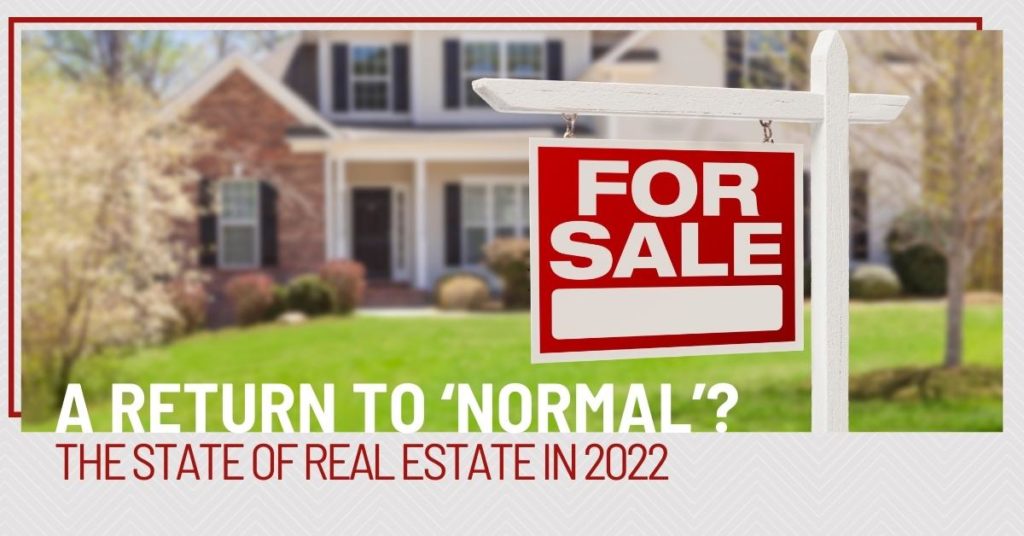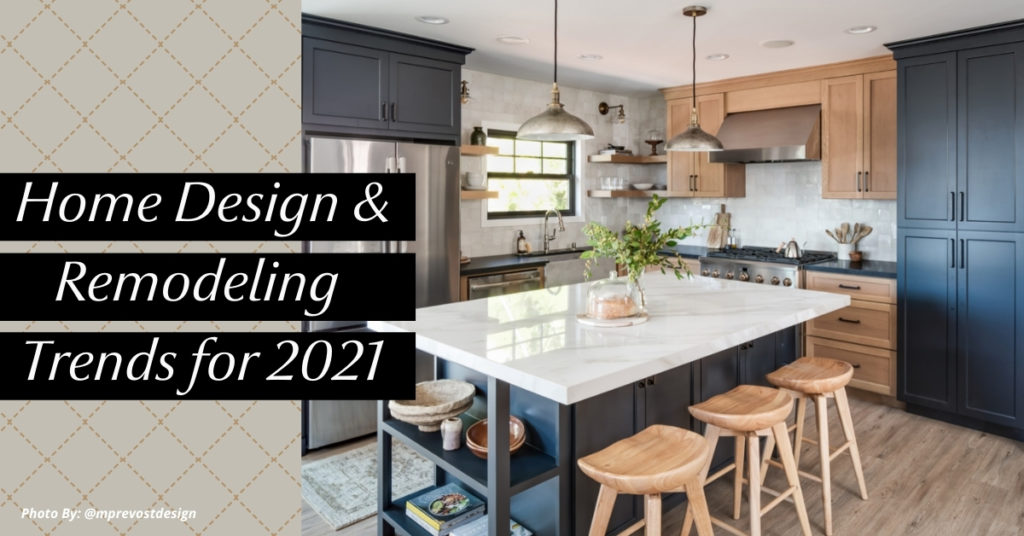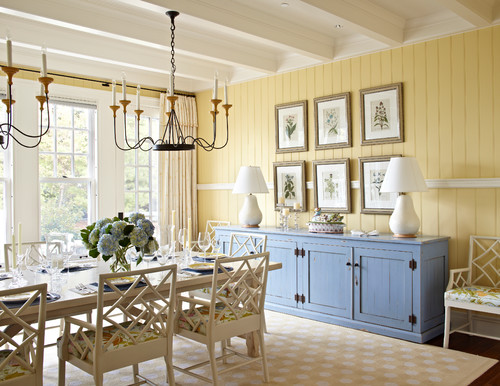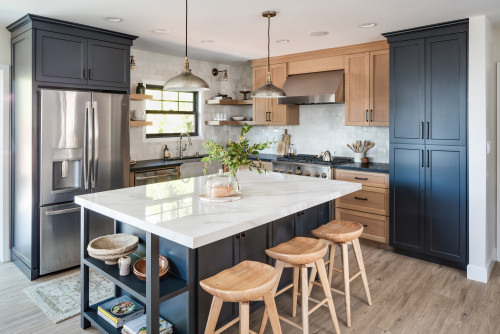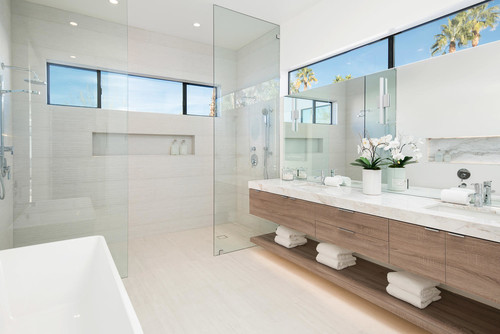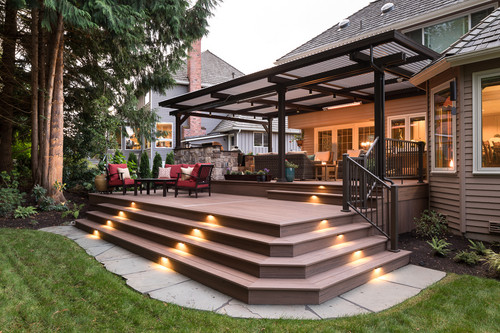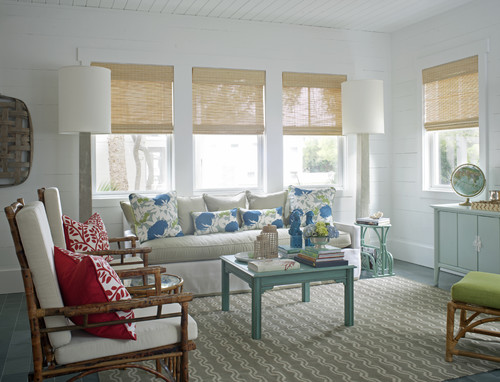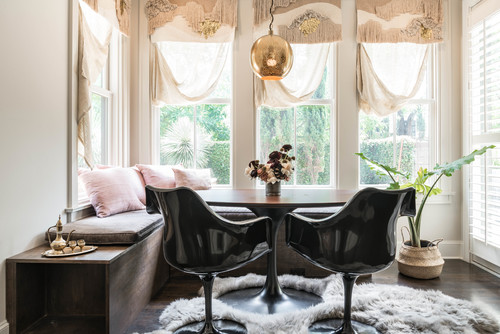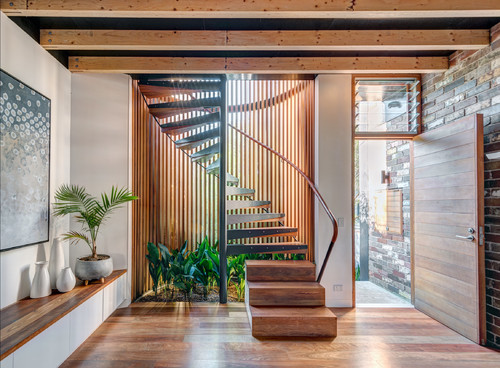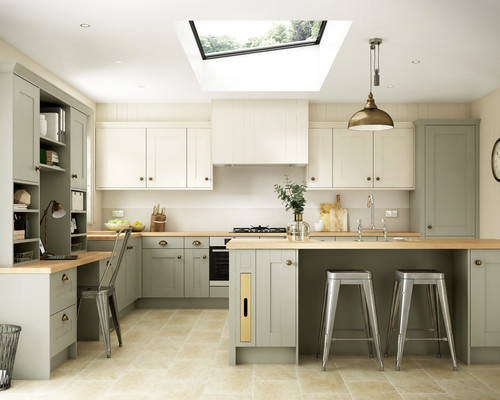
There’s a lot to consider when selling your home, from the market and appraisals to where you’ll go next. Don’t forget, however, that design is also a key factor. It’s often one of the first things buyers notice when they walk into a home, and it’s also a detail that you, as a seller, can easily control.
According to Realtor.com’s 2022 housing market forecast, home for-sale inventory will increase from last year, as will the projected number of overall sales.1 This means, if you’re looking to sell in the near future, now is the time to consider how you can stand out.
Updating your home design is one way to do that. Changes like new security features or upgraded siding can add value to your home now and be highlighted when you market it for sale later. To get the most out of your updates, focus on these popular home design features that will wow buyers in 2022.
Keep in mind, not all of these will work well in every house. If you plan to buy, list, or renovate a property, give us a call. We can help you realize your vision and maximize the impact of your investment.
Eco-Friendly Fixtures
Millennials account for the largest share of current homebuyers, according to the National Association of Realtors.2 Sustainable living tops the list of priorities for this generation. A recent Deloitte survey found that nearly one-third of millennials initiate or deepen their consumer investment in products or services that help the environment—this also includes the houses they choose to live in.3
Here are a few eco-friendly design features that will be attractive to these millennial buyers in 2022. Bonus, they can net a significant return on investment (ROI) for you, as a seller, too.
- Energy-Efficient Windows: Heat gain or loss from low-performance windows drives 25–30 percent of home heating and cooling costs, according to Energy.gov.4 Therefore, energy-efficient windows can help homeowners save money.
- Low-Flow Water Fixtures: According to the EPA, replacing your shower head with one that’s labeled with WaterSense can save four gallons of water with each shower.5 Doing the same with your faucet can save 700 gallons per year. This leads to cost savings and environmental support.
- Native Landscaping: According to the American Society of Landscape Architects, 58 percent of members report increased client demand for native trees and plants as a means to combat biodiversity loss from climate change..6 Enhance the eco-friendly appeal of your home with some native plants in the front yard.
Wellness Retreat Nooks
The pandemic has had a significant impact on mental health. For example, in an effort to prioritize mental health, many people are relocating to quieter, more peaceful homes, with 22 percent of city dwellers planning a move to less congested residential areas, according to the Home Improvement Research Institute’s (HIRI) 2021 Insights Summit.7
However, no matter where you live, you can still intrigue buyers by jumping on this trend. At-home wellness amenities, which were once viewed as luxuries, are now on many homeowners’ must-have lists. Indoor spaces that function as a retreat for wellness and self-care have become extremely popular, according to HIRI.
Improve your quality of life in your home with reading nooks, spa-inspired bathrooms, and exercise or meditation spaces. Even if your house doesn’t have the square footage to section off an entire room for relaxation, making simple tweaks to natural light, air purifiers, and indoor plants can help you feel better in your home now while enabling future buyers to see the opportunity for their own space.
Calming Paint Colors
Paint colors that produce a calming atmosphere will also be a key selling point in 2022. Soft earth tones and natural hues will prevail this year, including various shades of blue, green, brown, and beige. Recent research suggests steering clear of trendy paint colors in favor of a more classic palette to bring the feel of nature indoors in a subtle and soothing way.8
In fact, the same research found that buyers are often willing to pay an extra $4,698 for a house with a light blue bathroom or an extra $1,491 for a house with a dark blue bedroom. Another crowd-pleasing hue to refresh the walls with is BEHR’s 2022 paint color of the year, known as Breezeway.9
This shade of green with silver undertones was created to mimic sea glass. As the BEHR website describes it, Breezeway “evokes feelings of coolness and peace, while representing a desire to move forward and discover newfound passions.”
Home Safety Features
Buyers want peace of mind more now than ever before. According to a 2021 survey from the American Institute of Architects, members report seeing an increase in the popularity of these home safety features10:
- Emergency backup power generation
- Accommodations for multiple generations
- Wider accessible doorways and hallways
- Home security monitoring equipment
- Interior ramps and home elevator features
Consider how you can build home safety features like these into the design of your home to enhance your quality of life now and attract more buyers later. For example, you could install a backup generator in the garage and sell it with the house or update your major doorways to be wider.
Before making an investment in expensive home safety upgrades, contact us. We can help you determine what will deliver the greatest ROI for your location and goals.
Designated Work Spaces
It may come as no surprise that after the pandemic, 63 percent of homebuyers want their next house to feature room for a designated office, according to the National Association of Home Builders.11 In addition, 70 percent of these buyers want the office to be at least 100 square feet (or a 10×10 room).
If you can, consider turning a bedroom or a den into a work-from-home office. When designing the space, make it both functional and aesthetically pleasing. Position a desk near the window for natural light, install a bookshelf unit, arrange a few succulents on the work surface, and hang a few framed posters or a cork bulletin board on the wall. You want the space to foster productivity as well as be a place in your home you enjoy spending time.
When you get ready to sell, we can help you highlight your designated work space. Given the high demand for this design feature, it can help you interest more buyers and attract more competitive offers—if marketed creatively.
Luxury Kitchen Retouches
The kitchen has always been a main focal point of interior design, and that’s no different in 2022. Families will always need this space to come together in their own homes.
This year’s buyers want a kitchen with new upgrades and retouches, but you don’t have to renovate the entire kitchen to make an impact. If you’re not sure where to start, here are a few tips on how to create a kitchen that buyers will love without spending too much money on renovations:
- Repaint the kitchen, keeping the calm and nature-inspired colors in mind that are most popular right now. Taking a kitchen from dark to light by painting cabinets and walls can make all the difference.
- Update the hardware. These kitchen “accessories” stand out and add personality to an otherwise standard kitchen.
- Update light fixtures to bring in more light while also adding a fresh look and feel to the space.
Unique Accent Walls
In a recent interview with the National Association of Realtors, Brian Santos, the director of education for Fresh Coat Painters, explains that bold, unique accent walls are trendy right now.12 An accent wall gives a home character while maintaining the calming feel of natural- and neutral-colored walls.
Santos also explains that this is part of a design aesthetic that draws inspiration from the Roaring Twenties, and it’s likely to remain a sought-after home feature in 2022. Here are some bold colors to consider for your home’s accent walls:
- Solid black
- Jewel or metallic tones
- Textured wallpaper
- Painted ceilings
- Built-in shelves
If you’re planning to sell in the next year, talk to us before adding an accent wall. Depending on your target buyer, it may be a design feature that actually hurts your home’s value. We can run a free Comparative Market Analysis on your home to help you understand what would resell best in your neighborhood.
Exterior Siding Updates
A new exterior siding refresh is one of the most affordable renovation projects you can do to help increase a home’s resale value. The average cost is just $12 per square foot, but higher-end material options can push costs closer to $50 per square foot.13 What’s more, there are many siding materials available, from fiber-cement, brick, and wood to vinyl, metal, and stone.
While all these options can infuse the exterior with character and add curb appeal, fiber-cement and vinyl deliver the highest ROI. In fact, according to a 2021 Cost vs. Value Report, a vinyl siding replacement can boost resale value by $11,315 (68.3 percent cost recoup), and a fiber-cement siding replacement can boost resale value by $13,618 (69.4 percent cost recoup).14
Give your home this simple, affordable, and attractive facelift before putting it on the market. If you’re not sure how to get started yourself, our team can connect you with a trusted vendor to guide you through the process.
Keep These Home Design Features on Your Radar in 2022
These design features can infuse personality into your home while helping to close the deal if you plan to sell in 2022. The average buyer knows just what they’re looking for in a space they plan to call home, so with some investment and foresight, you can give your house an edge over the competition—and boost resale value in the process.
However, you don’t need to make all these changes to attract more buyers. We can help you determine which design features you should add to your home by sharing insights and tips on how to maximize the return on your investment. We can also run a Comparative Market Analysis on your home to find out how it compares to others in the area, which will help us decide what changes need to be made. Contact us to schedule a free consultation!
Sources:
- Realtor – https://www.realtor.com/research/2022-national-housing-forecast/
- National Association of Realtors – https://www.nar.realtor/research-and-statistics/research-reports/home-buyer-and-seller-generational-trends
- Deloitte – https://www2.deloitte.com/content/dam/Deloitte/global/Documents/2021-deloitte-global-millennial-survey-report.pdf
- Energy.gov – https://www.energy.gov/energysaver/update-or-replace-windows
- EPA.gov – https://www.epa.gov/watersense/about-watersense
- American Society of Landscape Architects – https://www.asla.org/NewsReleaseDetails.aspx?id=60427
- Home Improvement Research Institute – https://www.hiri.org/blog/4-major-home-wellness-trends-from-hiri-summit-speaker-dr-jie-zhao
- Zillow – http://zillow.mediaroom.com/2021-07-15-Homes-With-Light-Blue-Bathrooms,-Dark-Blue-Bedrooms-Could-Sell-for-Up-to-4,698-More-Than-Expected
- Behr – https://www.behr.com/colorfullybehr/behr-announces-2022-color-of-the-year-and-trends-palette/
- American Institute of Architects – http://info.aia.org/AIArchitect/2021/0910/aia-interactive/index.html#
- National Association of Home Builders – https://www.nahb.org/-/media/NAHB/news-and-economics/docs/housing-economics-plus/special-studies/2021/special-study-what-home-buyers-really-want-march-2021.pdf?_ga=2.188050984.1824982414.1639512139-1247360189.1639512139
- National Association of Realtors – https://www.nar.realtor/blogs/styled-staged-sold/hot-home-trend-the-accent-wall-is-back
- Forbes – https://www.forbes.com/advisor/home-improvement/how-much-does-siding-cost-to-install/
- Remodeling Magazine – https://www.remodeling.hw.net/cost-vs-value/2021/


